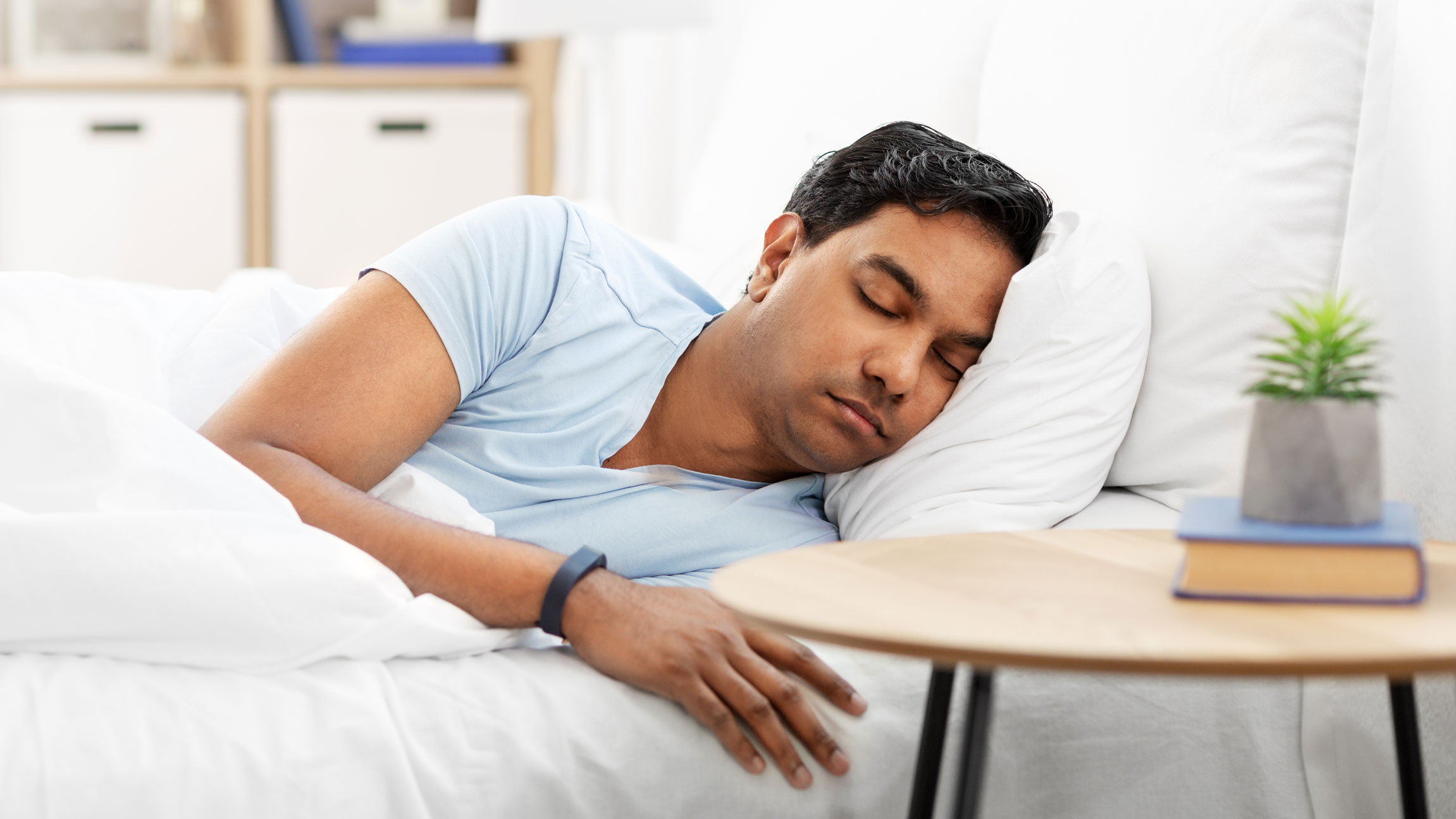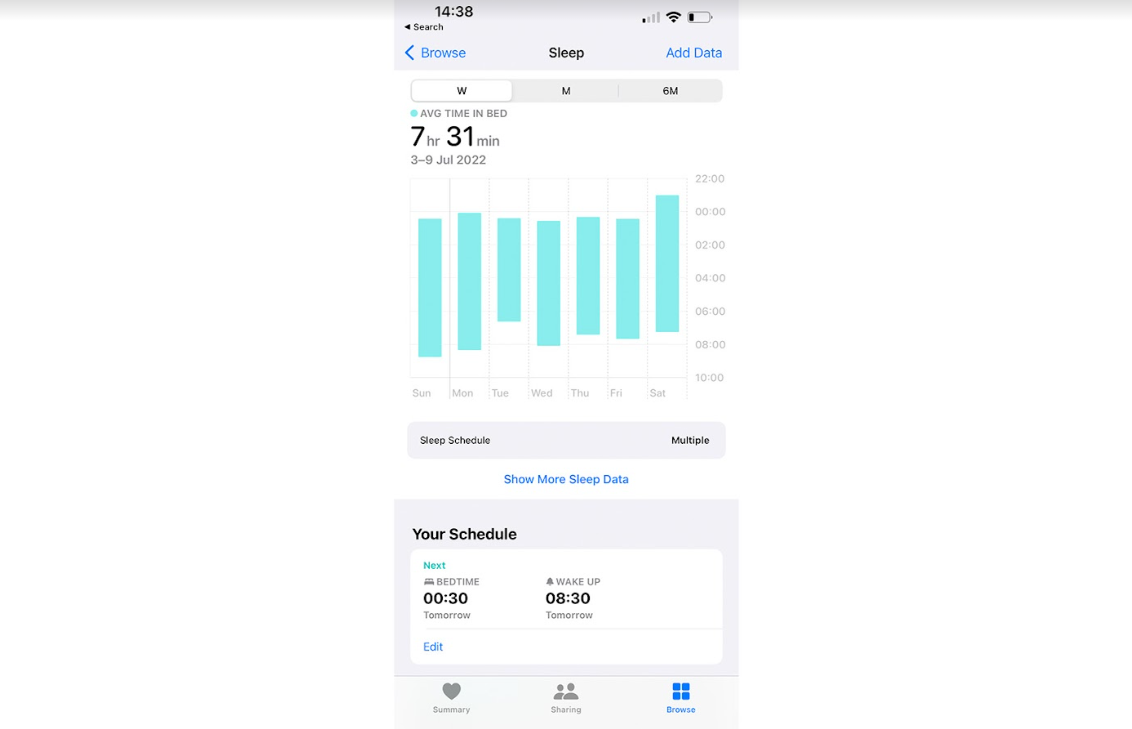How to use the data from your sleep tracker
What does all this data mean?

If you’ve used one of the best sleep trackers or fitness trackers in the last few years, you’ll know how all-encompassing the data the device on your wrist can be.
From blood-oxygen levels to calories and activity tracking, there’s a huge amount of data collected while you’re awake and moving, and just as much during sleep tracking.
Whether it’s how long you’ve slept, the various stages of sleep and the timings of each, or attempting to diagnose conditions like sleep apnea, there’s a lot to dig into but it can be tough to do so; what patterns do you need to look for? What would be considered a “normal” sleep cycle? These questions, and plenty more, can make it tricky to interpret the data, especially for beginners.
Here’s how to use the data from your sleep tracker to inform life choices.
Sleep data: How to find your data
First thing’s first, and that’s finding your data to begin with. If you’re using the likes of a Fitbit device, you’ll find everything within the Fitbit app, with a dashboard of sorts showing you important metrics. Simply find the sleep section and you’ll be able to see all of the data collected while your body is at rest. The same applies to any fitness tracker tied directly into an app.
Apple Watches are a little different because Apple sends everything to the Health app on your iPhone. Here, you’ll see data on your three rings (Calories, Exercise, Stand), but pressing “Browse” in the bottom left will let you flick through every category. Then you’ll just need to hit the “Sleep” option to get a look at your sleep data.

Sleep data: Identifying the variables
Whichever device you’re using, there’s some input required from the user to find the key differentiation between days. For instance, maybe you drank an extra coffee on one day, or exercised for twice as long.
Sign up for breaking news, reviews, opinion, top tech deals, and more.
These kinds of things need to be logged, and form different “variables” that can be used to assess the impact they have on sleep. Here are a few of the different variables to consider:
Sleep location and conditions
It sounds an obvious thing to consider, but where you sleep will affect how you sleep. If the temperature in your room is too hot or too cold, you’ll see an effect on your sleep.
If you share a bed, it could be that you or your partner are sleep-talking, fidgeting, or simply snoring, too. If that’s the case, consider an app to record the audio from your sleep period to be able to spot what may be affecting your sleep overall.
Fitness and Activity
Fitness trackers, as the name suggests, do a great job of tracking your activity through the day. Whether that’s a run, weight-lifting session, or a particularly long stroll, these things naturally impact on your body’s rest periods and how much sleep you get.
If you’ve run a marathon, you can reasonably expect to sleep particularly well, versus the day after where you’re likely to be resting a lot more. The same goes for any activity – your muscles will fatigue, and you’ll require rest. If you’re struggling to sleep consistently, it may be that you need to exercise more regularly, or perhaps less, if you find yourself aching.

Diet
Diet is essential not just to sleep, but for general wellbeing – eating too much of the wrong things can cause lethargy, while not eating enough can bring your day grinding to a halt as you struggle for focus and energy.
That delicate balance will hold plenty of sway on your sleep, too. Drinking a caffeinated drink like a coffee or an energy drink late at night, for example, can wreak havoc on your sleep cycle. By the same token, you may find warm milk leads to a more consistent sleeping pattern.
These are all things to catalog, and while there are impressive apps like MyFitnessPal to track intake and macros, consider something like Streaks, a habit-forming app, as a simpler alternative.
Screen time
In today’s always-online world, spending a lot of time on a computer is harder to avoid than ever, and even if you do, there’s nothing wrong with unwinding with some television after work.
That’s not even factoring in a phone or tablet, but thankfully there are tools on those to keep track of how much screen-on time you have in a given day. Apple uses its own screen-time tracker, but both iOS and Android have a wealth of third-party options.
If you end up working later, and on a computer, on any given day, you’ll want to see how that affects your sleep. If you finish work, play videogames, and then watch YouTube videos in bed until you fall asleep, it might be time to trim back on your screen time – particularly if your sleep data is disrupted by it.
Sleep data: Draw conclusions
All of the above will provide you with variables, and then you’ll need to compare it to the data points collected by your sleep tracker.
A late coffee may mean it takes much longer for your body to rest, or a long day at work may see you struggle to shut off. A particularly heavy workout may cause you to fall asleep sooner, while you may be surprised by how much your partner snores!
Some apps will interpret much of the raw data for you to help you make positive changes going forward. As an example, Fitbit Premium will take into account your activity, rest, sleep, and more to form a “Daily Readiness Score”. If this is lower than the day before, the app (and your tracker) will suggest that users maybe take it a little easier to recharge their internal batteries.
While there’s undoubtedly some legwork to be done, the process of identifying variables and the effect they have on sleep can be not just helpful, but rewarding, too.

Lloyd Coombes is a freelance tech and fitness writer for TechRadar. He's an expert in all things Apple as well as Computer and Gaming tech, with previous works published on TopTenReviews, Space.com, and Live Science. You'll find him regularly testing the latest MacBook or iPhone, but he spends most of his time writing about video games at Dexerto.